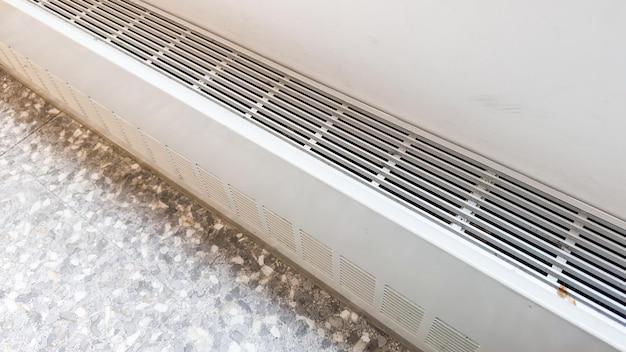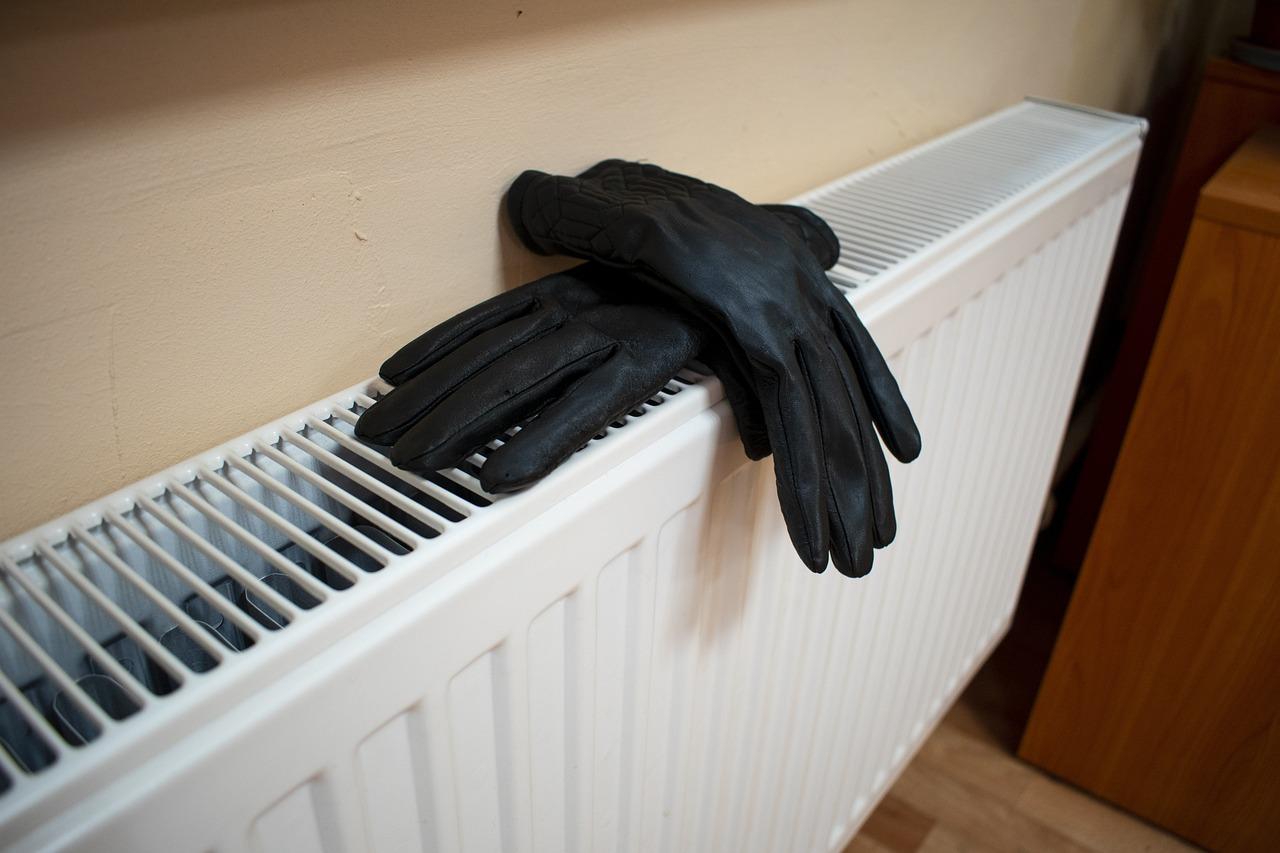Baseboard heaters are a popular choice for heating individual rooms, providing a cost-effective and efficient way to warm up our living spaces. But just how hot do these heaters get? In this blog post, we’ll explore the temperature ranges of baseboard heaters and address common questions and concerns related to their safety, efficiency, and operation.
Are baseboard heaters safe to use overnight? Can they cause fires? Do they get hot to the touch? You may have heard these questions before, and we’ll provide answers to help you feel confident about using baseboard heaters in your home. We’ll also discuss the lifespan of these heaters, whether they can turn on by themselves, and the reasons behind any noise they may generate.
Additionally, we’ll delve into some practical tips to make baseboard heat more efficient and address common issues with this type of heating system. Join us as we explore the ins and outs of baseboard heaters, dispel myths, and provide you with the insights you need to stay warm and safe during the colder months.
How Hot Do Baseboard Heaters Get
Understanding the Heatwave: A Closer Look at Baseboard Heaters
Have you ever wondered how hot baseboard heaters can get? Well, buckle up because we’re about to dive deep into the temperature realms of these powerhouses of warmth. Baseboard heaters are like the silent protagonists of chilly rooms, providing a cozy escape from the frigid claws of winter. But just how hot can they get? Let’s find out!
The Fiery Fahrenheit: A Temperature Tango
When it comes to baseboard heaters, the temperature range can vary from manufacturer to manufacturer. Typically, these heaters operate around 150°F to 200°F (65°C to 93°C). That’s hot enough to make any snowflake sweat! However, it’s important to note that these numbers can fluctuate depending on factors like thermostat settings, room insulation, and overall heating system efficiency.
The Sizzling Safety Dance: Keeping It Cool
Now, before you start worrying about accidentally turning your living room into a sauna, let’s talk safety. Baseboard heaters are designed with built-in safety mechanisms to prevent them from overheating and causing any fire hazards. Most heaters include automatic shut-off features that kick in when the temperature exceeds a certain threshold. So rest assured, your baseboard heater won’t turn into a mini-volcano.
A Toasty Touch: Feeling the Heat
While baseboard heaters can reach scorching temperatures, their exterior surfaces stay relatively cool to the touch. Thanks to their clever design, the heat is primarily emitted through convection, creating a gentle, warm air flow. This means you can snuggle up beside your baseboard heater without worrying about roasting your marshmallows or accidentally branding your favorite sweater.
The Power Behind the Heat: Electricity Takes the Stage
So, how do baseboard heaters generate their fiery warmth? Well, it’s all thanks to the magic of electricity. When you turn on your baseboard heater, an electric current flows through the heating element, converting electrical energy into heat. This radiant heat warms up the surrounding air, creating a pocket of cozy comfort in your space.
Putting a Cap on the Heat: Thermostats to the Rescue
It’s no secret that baseboard heaters can get pretty hot, but don’t fret! Thermostats are here to save the day. These nifty devices allow you to control the temperature and keep the heat in check. You can easily adjust the thermostat settings to find the perfect balance between toasty and tropical. It’s like having your very own heatwave maestro, conducting the temperature symphony in your home.
Final Thoughts: Heating Up the Room, Not Your Worries
In conclusion, baseboard heaters have the potential to reach high temperatures, but they come equipped with safety features to prevent overheating. Their surfaces remain cool to the touch, ensuring a comfortable and worry-free experience. So, embrace the warmth, cozy up, and let the baseboard heaters work their magic in creating a toasty haven during the chilly winter months. Stay warm and toasty, my friends!
FAQ: How Hot Do Baseboard Heaters Get
Baseboard heaters are a common heating option in many homes, offering warmth and comfort during chilly days. However, like any heating device, they come with their own set of questions and concerns. In this FAQ-style guide, we address some of the most frequently asked questions about baseboard heaters. So, let’s dive right in and shed some light on these hot topics!
Are Baseboard Heaters Safe Overnight
Great news! Baseboard heaters are designed with safety in mind. As long as they are properly installed and maintained, they can safely run overnight without posing a significant risk. However, it’s always a good idea to exercise caution and follow the manufacturer’s recommendations to ensure the safest experience possible. Sweet dreams and cozy nights await!
Are New Baseboard Heaters More Efficient
Absolutely! Newer baseboard heaters have undergone impressive advancements in technology, making them more efficient than their older counterparts. With improved heating elements and advanced thermostats, these newfound wonders can help you save energy and keep your wallet happy. Upgrade to a new baseboard heater, and you’ll be heating your home efficiently in no time!
Can Baseboard Heaters Cause Fires
Let’s put those worries to rest. Baseboard heaters are generally safe when used correctly. However, like any electrical appliance, caution is key. Avoid overloading the circuit and ensure that the heater is properly maintained. By keeping flammable objects a safe distance away and practicing responsible usage, the chances of any heated situations are greatly reduced. Safety first, always!
Do Electric Baseboard Heaters Get Hot to the Touch
You bet! Electric baseboard heaters generate warmth by passing electricity through heating elements. As a result, the surface can get quite hot. It’s essential to keep this in mind, especially if you have children or curious pets roaming around. But don’t worry—most modern models come equipped with safety features to prevent burns. Just remember, love from a distance!
How Long Does a Baseboard Heater Last
Good news for the long-term thinkers out there! A well-maintained baseboard heater can last anywhere from 20 to 30 years. It’s like having a reliable heating companion that stands the test of time—always there when you need warmth and comfort. So, sit back, relax, and embrace the cozy embrace of your trusty baseboard heater.
Can Baseboard Heaters Turn On By Themselves
Well, that would be quite a ghostly encounter! But fear not, it’s highly unlikely for baseboard heaters to turn on by themselves. Usually, they require human interaction to work their magic. However, if you do happen to experience the spooky phenomenon of a self-operating heater, it’s crucial to seek professional assistance to prevent any paranormal heating bills.
Why Do Baseboard Heaters Make Noise
Ah, the symphony of heating in action! Some baseboard heaters can produce minor noises such as clicking or popping sounds. But fear not, these are usually harmless and nothing to lose your mind over. Thermal expansion and contraction of the materials are often responsible for these serenades. Sit back, enjoy the show, and let the cozy sounds lull you into warmth-induced tranquility.
Can Electric Baseboard Heaters Cause Carbon Monoxide
Rest assured, electric baseboard heaters do not produce carbon monoxide. Unlike fuel-powered heating systems, which burn fossil fuels and can potentially release this dangerous gas, electric baseboard heaters convert electrical energy into heat without any combustion. Your home will be filled with warmth, not toxic fumes. Breathe easy and enjoy the cozy, carbon monoxide-free environment!
How Much Does It Cost to Run a 1500 Watt Heater for 24 Hours
Running a 1500-watt heater for 24 hours might sound intimidating, but let’s break it down. In the US, the average cost of electricity is around $0.13 per kilowatt-hour. With simple math, we can estimate that running the heater for a full day would cost approximately $4.32. So, for the price of a fancy coffee, you can enjoy a day of toasty comfort. Worth every penny, wouldn’t you say?
Can You Leave Baseboard Heaters On All Day
Certainly! Baseboard heaters are designed to provide continuous heat, making them perfect for all-day coziness. However, it’s wise to exercise caution and ensure the heater is in good working condition. Consider using a programmable thermostat, so you have control over temperature settings throughout the day. It’s all about finding the perfect balance between warmth, comfort, and energy efficiency.
How Long Does It Take for a Baseboard Heater to Warm Up
Ah, the anticipation of warmth! The time it takes for a baseboard heater to warm up depends on various factors, such as the room size, insulation, and the heater’s wattage. Generally, you can expect a gradual increase in temperature within 10 to 20 minutes of turning it on. However, for peak toasty conditions, give it a good 30 minutes to an hour. So, sit tight, and let the warmth slowly embrace you.
Can You Put a Couch Against a Baseboard Heater
While we all enjoy a cozy couch snuggle, it’s best not to get too close to your baseboard heater. To maintain proper airflow and prevent potential fire hazards, it’s recommended to keep a safe distance between furniture and heaters. Pro tip: Leave at least 12 inches of clearance for a worry-free lounging experience. Because let’s face it, nobody wants their favorite couch roast.
Can You Put a TV in Front of a Baseboard Heater
Movie nights by the fireplace are a classic scene, but what about cozying up next to a baseboard heater? While it may sound tempting to create the ultimate warmth-and-entertainment cocoon, it’s essential to exercise caution. Avoid placing any electronic devices, including TVs, directly in front of the heater. Heat and electronics don’t always dance well together, and you wouldn’t want your TV feeling the heat, literally!
Should You Turn Off Baseboard Heaters
Decisions, decisions! Whether to turn off your baseboard heater depends on your personal preferences and energy-saving goals. However, keep in mind that baseboard heaters are generally more energy-efficient when kept at a consistent temperature, rather than continuously turning them on and off. If you plan on leaving your cozy haven for an extended period, it might be wise to adjust the thermostat settings or use a programmable thermostat to save energy while you’re away.
How Can I Make Baseboard Heat More Efficient
Want to squeeze every drop of efficiency out of your baseboard heater? Fear not, we’ve got some tips up our sleeves! Start by ensuring the heater is clean and free from any dirt or debris that could hinder its performance. Additionally, maintaining proper insulation in your home, sealing any drafts, and using a programmable thermostat can all contribute to improved energy efficiency. It’s all about making wise choices that warm both your heart and your heating bills!
What’s Wrong With Baseboard Heating
Well, apart from a slightly less amusing personality than a stand-up comedian, baseboard heating does have a few drawbacks. One of the main concerns is the tendency for dust and dirt to accumulate on the heating elements, reducing their efficiency. Additionally, baseboard heaters take up valuable wall space, limiting furniture placement options. However, with proper maintenance and a little creativity in your interior design, these minor inconveniences can easily be mitigated. Embrace the warmth and get creative!
Why Is Baseboard Heating So Expensive
Ah, the age-old question of heating costs. While baseboard heating may appear more expensive than other heating options, such as central heating systems, it’s important to consider the upfront costs, installation requirements, and maintenance needs. Baseboard heaters provide localized heating, allowing for temperature customization from room to room. So, while it may have a higher initial price tag, the control and comfort it delivers are well worth the investment. Embrace the warmth, and let your bank account warm up to the idea too!
And there you have it—the comprehensive FAQ-style guide to unravel the mysteries of baseboard heaters. From safety concerns to cost considerations, we’ve covered it all in an engaging and informative manner. Embrace the warmth, stay cozy, and let your baseboard heater be your trusty companion on chilly days.

